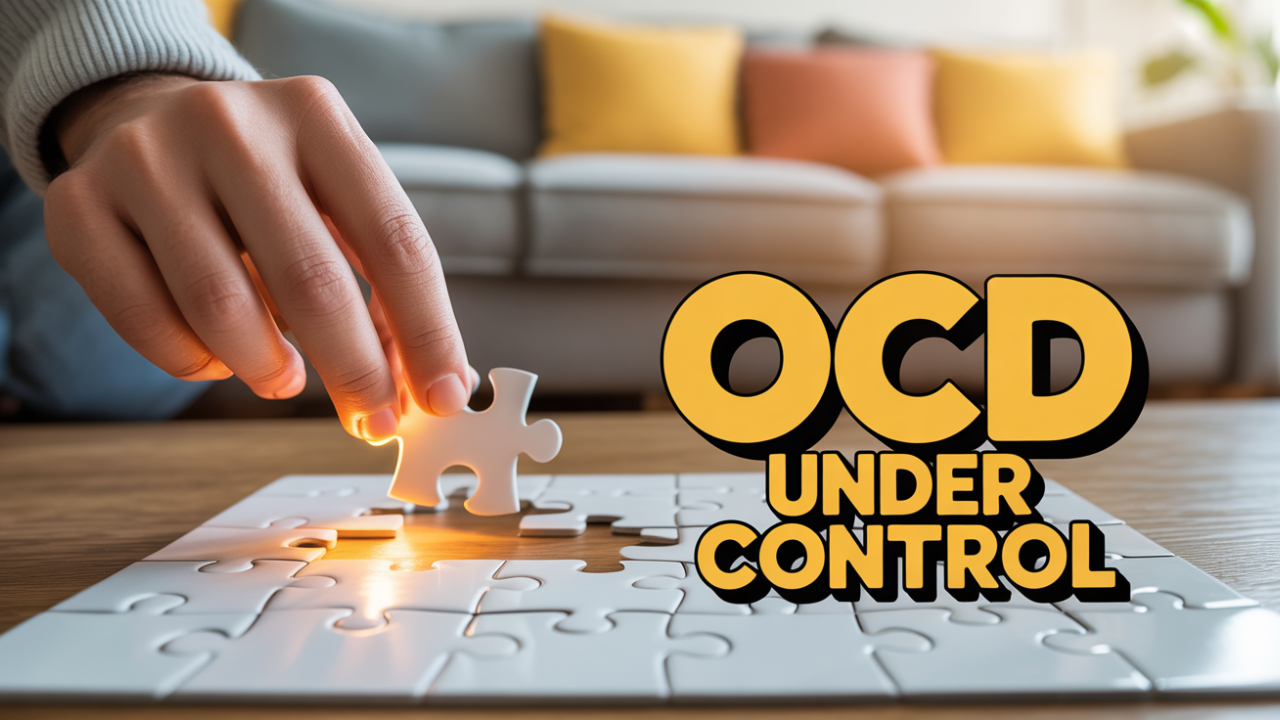If your teen is showing signs of obsessive-compulsive disorder (OCD), getting help early can make a big difference. Our online OCD treatment program gives teenagers the support they need from the comfort of home. We connect teens with licensed mental health professionals who understand OCD and know how to help them manage compulsive behaviors, intrusive thoughts, and rituals.
Our teen-focused care is designed to improve their daily life, reduce stress, and bring a better quality of life. Through accessible virtual programs, your teen can get the treatment plan they need—without ever leaving the house.
OCD is a mental disorder that causes unwanted thoughts (called obsessions) and urges to repeat actions (called compulsions). It can make day-to-day activities hard. Teens with OCD might wash their hands (hand washing) many times, struggle with excessive concerns about germs, safety, order, or experience rumination, shame, or guilt.
These repetitive behaviors can affect school, friendships, and family life. OCD is more than just liking things neat or clean. It’s a mental health condition that needs care from a clinician, often through OCD therapy, exposure and response prevention (ERP), or medication like fluoxetine, sertraline, fluvoxamine, clomipramine, or other selective serotonin reuptake inhibitors.

Teenagers with obsessive-compulsive disorder (OCD) may not always show the same signs as adults. Some may become quiet, while others may show anxiety, fear, or perfectionism, and some may seem angry or upset. Recognizing these mental health disorder symptoms early can help create an effective treatment plan with a clinician or mental health professional.
Common symptoms of depression in teens include:
Repeated hand washing, cleaning, or checking behaviors (compulsions)
Unwanted intrusive thoughts, such as fear of germs, harm, or making mistakes
Difficulty focusing on school or attention to tasks due to obsessive rumination
Avoiding certain places or people because of phobias or panic attacks
Feeling ashamed, guilty, or overwhelmed by their own rituals and thoughts
Excessive concern about skin, appearance, or order
Trouble sleeping (insomnia) or eating because of stress and anxiety
Withdrawing from community, friends, or support groups due to embarrassment
Signs of comorbidity, such as depression, social anxiety disorder, or generalized anxiety disorder
Thoughts of self-harm or suicidal thoughts, which need immediate care from a health care professional or primary care physician
These symptoms can affect schoolwork, relationships, and family life. OCD in teens is a mental health disorder that requires understanding, proper evaluation, and management. Many find help through ocd therapy, such as exposure therapy, ERP therapy, counseling, and antidepressant medication like fluoxetine, sertraline, paroxetine, or clomipramine, which act as selective serotonin reuptake inhibitors.

Our online programs are flexible and built just for teens. We use secure video platforms and telehealth tools to improve accessibility and keep care affordable. Your teen can connect with an OCD therapist, clinician, or mental health professional from home at times that fit your family’s schedule.
We understand teens face stress, busy routines, and sometimes anxiety about in-person visits. That’s why we focus on virtual therapy, online ocd treatment, and video sessions that are private, effective, and guided by expert therapists with experience in ocd therapy, erp therapy, and counseling.
We work with most health insurance, medicare, and medicaid plans, so families can use their health care policy and avoid unnecessary out-of-pocket fees. Our approach combines psychology, psychiatry, and evidence-based treatment plans, including exposure therapy and support for related conditions like anxiety disorders, generalized anxiety disorder, panic disorder, and social anxiety disorder.
This type of therapy helps teens understand their thoughts and how to change them. CBT is a common type of treatment for OCD.
ERP is a kind of response prevention therapy that slowly helps teens face their fears in a safe way. This can lead to a decrease in urge to do compulsions.
This therapy teaches teens to accept thoughts without acting on them. It can reduce feelings of anxiety and boost confidence.
For some teens, a combination with medications and therapy gives the best results. Our medical provider may help with medication management if needed.

Every teen is unique. That’s why we create a personalized treatment plan for each individual. During a full evaluation, our clinicians gather information about the teen’s symptoms, history, and severity to design a care program that meets their needs.
We use proven modalities and evidence-based therapy options, including:
Individual therapy with an experienced mental health professional or physician
Family therapy sessions to support parents and siblings
Supportive therapy for added emotional and social help
Your teen’s treatment plan may include ocd therapy, erp therapy, counseling, or medication management with antidepressants like fluoxetine, sertraline, fluvoxamine, or clomipramine, which act as reuptake inhibitors to improve serotonin levels and regulate emotion.
Here is what your teen’s therapy journey through our online programs may include:
Initial assessments and evaluation help our mental health professionals understand symptoms, compulsions, and intrusive thoughts.
Weekly or twice-weekly online therapy sessions with licensed therapists, improving accessibility and user comfort.
Relaxation practices, meditation, and breathing exercises designed to ease anxiety and support a healthy mindset.
Gradual exposure therapy and exposure and response prevention (ERP) tasks, considered the gold standard in treating OCD and related mental health disorders, including social anxiety disorder, scrupulosity, perfectionism, and specific phobias.
Ongoing reviews with your teen’s clinician to adjust the program and address any comorbidities, such as depression, panic disorder, trichotillomania, or hoarding disorder.
All sessions are private, safe, and led by qualified mental health, psychiatry, and psychology providers with experience treating personality disorders, postpartum OCD, postpartum depression, attention deficit hyperactivity disorder, excoriation disorder, and schizophrenia.
Our care is affordable, accepting health insurance and designed to fit your family’s budget with clear pricing and fees. Programs are available to teens across Northern California and beyond.

There is no one single cause, but OCD can be linked to:
Our goal is to look at all risk factors and create a treatment that fits your teen.
Many teens show improvement in symptoms within weeks or months. With time and support, OCD can become easier to manage. The goal is a reduction in symptoms, stronger coping skills, and better daily functioning.
Treatment is not about “fixing” someone. It’s about helping them live a full life, even with a chronic illness like OCD. With professional treatment, teens can learn to face their fears, reduce compulsive urges, and live their day life with more confidence. Call now for Online OCD Treatment for your teen.
You don’t have to wait. We make it easy to:
Our team includes trained medical professionals, counselors, and therapists who understand the aspects of depression and the factors for depression that teens face today.
Yes. Online care using Cognitive Behavioral Therapy and Exposure & Response Prevention can reduce OCD symptoms just as well as in-person treatment.
Compassionate support, expert guidance, and tailored programs for adolescent mental health.
Connect with Adolescent Mental Health today. Let us guide your teenager towards resilience and well-being.
online ocd therapy, ocd therapy online, online ocd treatment, ocd treatment online, teen ocd treatment